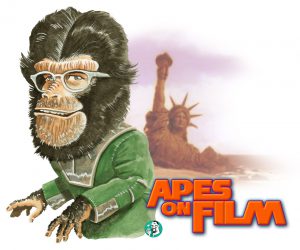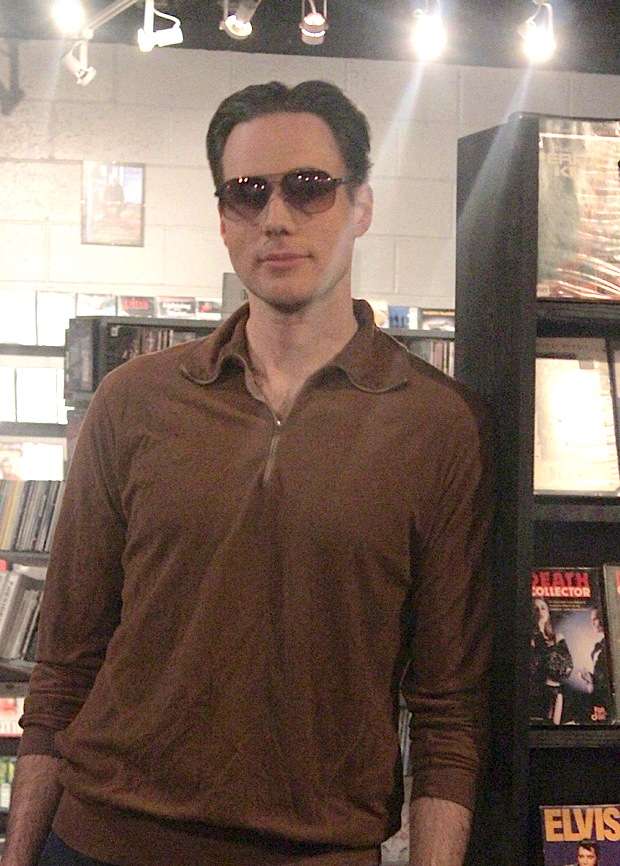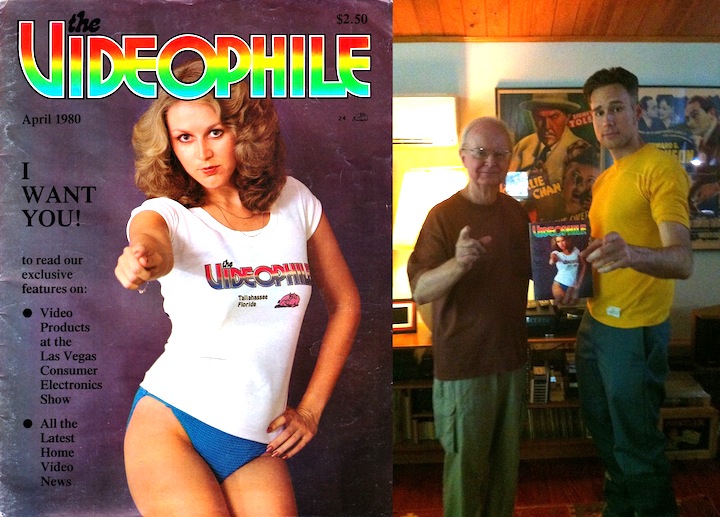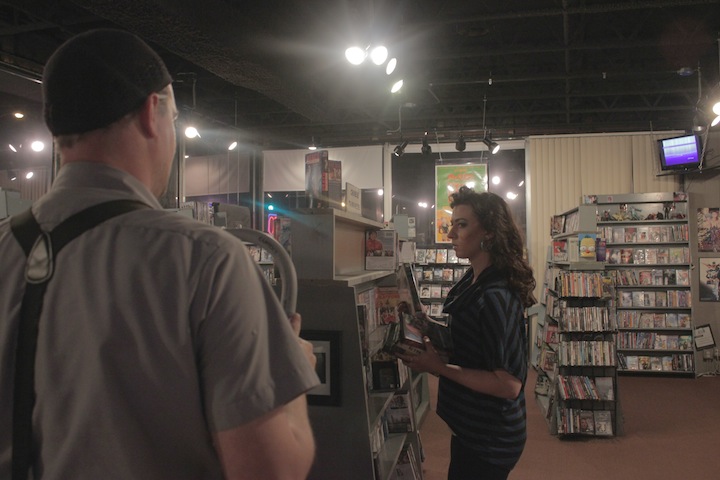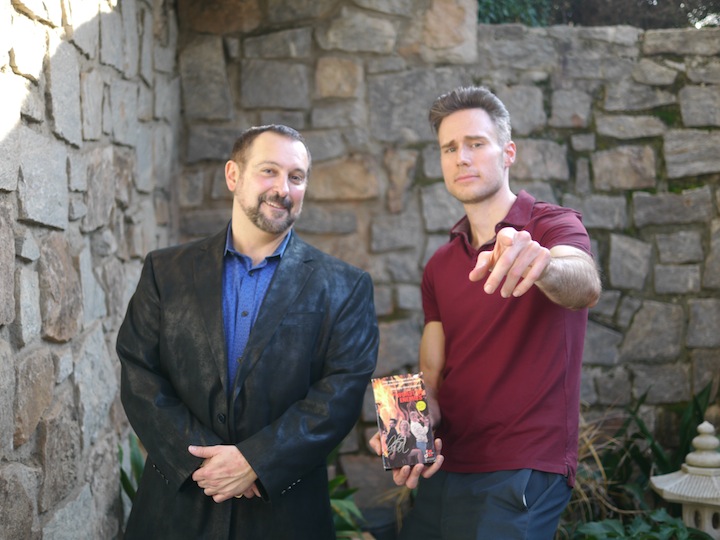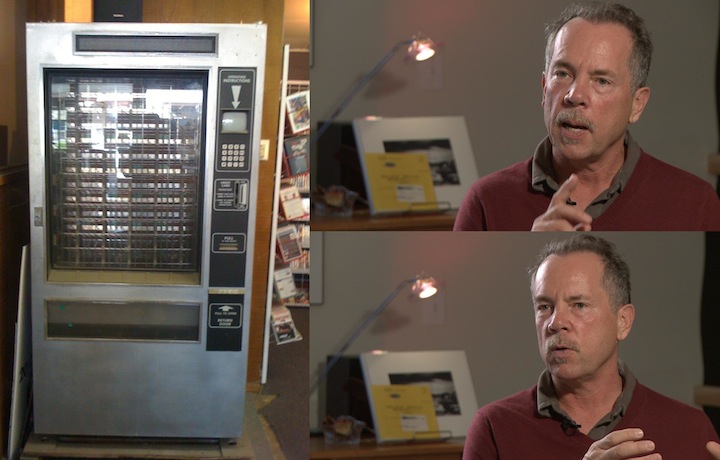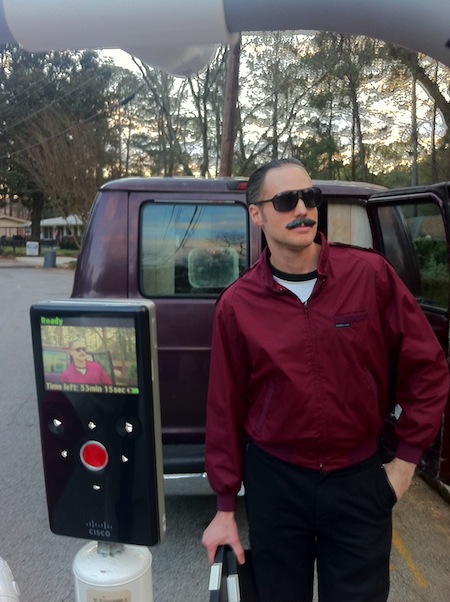Lucas Hardwick
Contributing Writer
Welcome to Apes on Film! This column exists to scratch your retro-film-in-high-definition itch. We’ll be reviewing new releases of vintage cinema and television on disc of all genres, finding gems and letting you know the skinny on what to avoid. Here at Apes on Film, our aim is to uncover the best in retro film. As we dig for artifacts, we’ll do our best not to bury our reputation. What will we find out here? Our destiny.
 THE DEAD MOTHER – 1993
THE DEAD MOTHER – 1993
4 out of 5 Bananas
Starring: Karra Elejalde, Ana Álvarez, Lio, Silvia Marsó
Director: Juanma Bajo Ulloa
Rated: Not rated
Studio: Radiance Films
Region: Region A
BRD Release Date: October 10, 2023
Audio Formats: Spanish LPCM 2.0
Video Codec: MPEG-4 AVC
Resolution: 1080p
Aspect Ratio: 2.35:1
Run Time: 111 minutes
CLICK HERE TO ORDER
The old saying “like taking candy from a baby” implies the ease of stealing something from someone particularly helpless or uninformed, but anyone with children knows this idiom is a bit misguided. When a child wants something badly enough, removal of said something is the equivalent to defusing an H-bomb with a sledgehammer.
The first instance of this phrase appears in the short story “Experiences of a Verdant Bookmaker” from the collection Taking Chances (1900) by Clarence Louis Cullen. In the story, a grocer who’s given up on his humble profession becomes a bookie and tries playing on an unfair advantage at the racetrack. The phrase originates: “Now, this looked like a pretty good thing to the groceryman. It looked like taking candy from a child.” So, no children were harmed or even involved in the saying’s origins, but over the years it’s become a cliché prevalent in everything from Bugs Bunny cartoons to a literal on screen translation in Spanish filmmaker Juanma Bajo Ulloa’s 1993 film THE DEAD MOTHER (LA MADRE MUERTA).
Ulloa’s film begins with a burglar, Ismael (Karra Elejalde), searching for the home of an art restorer in the middle of the night. The requisite black sock hat and flashlight lets us know he’s up to no good. We don’t know what Ismael is looking for, just that he’s not finding it. What we do know is there’s a child in the house, and the mother, startled by Ismael’s knocking around, appears and informs him there’s no money, and finds herself on the business end of a shotgun. As Ismael makes his escape, he takes a chocolate bar from the child’s highchair, but before he can slip out the kitchen window, young Leire (Raquel Santamaría) stands combative, wielding a large stick poised to avenge her mother, and ostensibly defend the chocolate bar Ismael has helped himself to.
sock hat and flashlight lets us know he’s up to no good. We don’t know what Ismael is looking for, just that he’s not finding it. What we do know is there’s a child in the house, and the mother, startled by Ismael’s knocking around, appears and informs him there’s no money, and finds herself on the business end of a shotgun. As Ismael makes his escape, he takes a chocolate bar from the child’s highchair, but before he can slip out the kitchen window, young Leire (Raquel Santamaría) stands combative, wielding a large stick poised to avenge her mother, and ostensibly defend the chocolate bar Ismael has helped himself to.
Fast forward several years later, we see that Ismael is still up to his crooked ways (not unlike author Cullen’s grocery store bookie), working as a bartender under an alias. Leire (Ava Álvarez) is now in her teens and is living out her days as a mute, afflicted with the arrested mind of a child in an institution for the mentally impaired. Leire’s caretaker Blanca (Silvia Marsó), takes the girl out on daily walks, and on one particular outing Leire and Ismael cross paths, both recognizing each other. This time Ismael and his girlfriend Maite (Lio) skip the candy and go for taking the baby instead, kidnapping Leire and holding her for ransom. “Like taking a patient from an institution.” Doesn’t quite roll off the tongue, does it?
Aside from Blanca’s attempt to rescue Leire, the film is a character study of the strange dynamic amongst Ismael, Leire, and Maite. Jealousy abounds when Maite realizes that Ismael’s internal conflict won’t permit him to murder Leire. A rift forms between the couple as Ismael negotiates a spectrum of emotions regarding Leire; processing everything from guilt to paternal role play to outright lover becomes a crucible for Ismael.
Chocolate remains the connective tissue that binds the strange relationship between Ismael and Leire. At one point, as Ismael is about to force Leire in front of an oncoming train, she drops a candy bar into a puddle and attempts to eat it. Ismael pulls her from the railroad tracks just as the train passes and explains to the girl that she shouldn’t eat the candy because it’s dirty. In this case the mutual regard for chocolate and a strange parental  instinct intervenes and saves Leire. The scene is also particularly odd given that while Ismael is contemplating a horrible manslaughter style death for Leire, he becomes more concerned with the poor hygienic choice to eat muddy chocolate.
instinct intervenes and saves Leire. The scene is also particularly odd given that while Ismael is contemplating a horrible manslaughter style death for Leire, he becomes more concerned with the poor hygienic choice to eat muddy chocolate.
Chocolate takes on a visually symbolic role permeating the film’s surroundings. Wall paneling and doors often mimic the delectable treat making it emblematic of protection, or imprisonment—your mileage may vary. If nothing else it is the one thing that remains to remind Leire of her dead mother and serves as a trigger for Ismael in the same regard.
As for dead mothers, there’s little mention of the one from the beginning of this film as the story progresses. Seconds before Ismael kills Leire’s mother, he spots a damaged painting of a mother and child; a diagonal slash through the canvas separates the two at the mother’s head. Imagery of that same slash appears throughout the film reminding us of the tragic separation between Leire and her mother. The image becomes representative of the loss Leire is unable to express because of her now impaired condition, the cause of which is eventually revealed, disclosing the catalyst for Ismael’s strange turmoil and affection for the girl.
Ismael’s peculiar obsession with odors and his attempts to earn a smile from Leire are other quirks reflecting the man’s internal unrest and response to personal change through his present experience. In a moment near the end of the film, Ismael, injured by a gunshot, is seated on a train next to a woman with a crying baby in a dirty diaper. Given Ismael’s well-established abhorrence for foul odors, we know he is aware of the soiled baby, but his metamorphosis through his fondness for Leire, along with his humbled and impaired condition, finds him silent and compassionate for the mother and child.
Radiance Films presents THE DEAD MOTHER in high definition on Blu-ray disc with a host of special features including a documentary on the making of the film; Ulloa’s short film “Victor’s Kingdom”; an audio commentary from the director; and, an image gallery. The limited edition features a booklet with writing on the film by Xavier Aldana Reyes and a newly translated archival essay by director Ulloa and co-writer Eduardo Bajo Ulloa. The crown jewel of this release, however, is the inclusion of a bonus CD of the film’s mysterious score by composer Bingen Mendizábal.
The bizarre, nearly inexplicable dynamic shared between Ismael and Leire is mostly foreign to us, but also anchors the film in curiosity. Its emotional beats are compelling enough to keep viewers involved, but seemingly at a distance. THE DEAD MOTHER is a vicarious experiment exploring specific scenarios of inner upheaval as a consequence of bad deeds by misguided people and the journey of loss through the mind of a child. Taking candy from a baby costs big bucks in emotional currency.
When he’s not working as a Sasquatch stand-in for sleazy European films, Lucas Hardwick spends time writing film essays and reviews for We Belong Dead and Screem magazines. Lucas also enjoys writing horror shorts and has earned Quarterfinalist status in the Killer Shorts and HorrOrigins screenwriting contests. You can find Lucas’ shorts on Coverfly. Look for Lucas on Twitter, Facebook, and Letterboxd, and for all of Lucas’s content, be sure to check out his Linktree.

